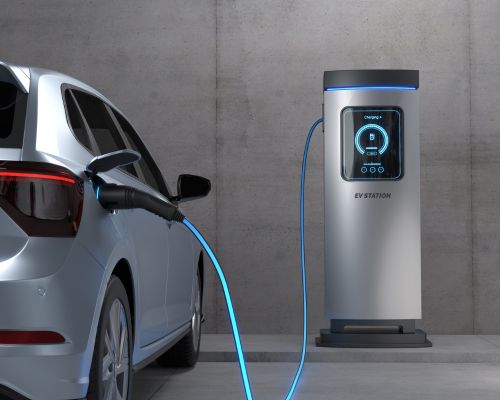The Evolution of Electric Vehicles
25/07/2024 | EV Evolution
Introduction
The automotive industry has been transformed by the emergence of electric vehicles (EVs), which provide a sustainable option for traditional gasoline-powered cars. Thanks to technological advancements, growing environmental consciousness, and favourable government regulations, EVs are quickly becoming popular globally. This blog will delve into the progression of electric vehicles, their advantages, obstacles, and the future of transportation in an electric era.
Evolution
Early Beginnings: The Dawn of Electric Mobility
The origin of electric vehicles (EVs) can be traced back to the early 1800s. In 1828, Hungarian engineer Ányos Jedlik constructed a successful electric car, creating a small-scale model powered by a basic electric motor. During the 1830s, Scottish inventor Robert Anderson developed an electric carriage, though it used non-rechargeable batteries.
The pivotal moment arrived in 1879 when British inventor Thomas Parker created the first functional electric vehicle using rechargeable batteries. By the end of the 1800s, electric cars had begun gaining popularity as they were quieter, cleaner, and easier to operate than their gasoline and steam-powered counterparts.
The automotive industry has been transformed by the emergence of electric vehicles (EVs), which provide a sustainable option for traditional gasoline-powered cars. Thanks to technological advancements, growing environmental consciousness, and favourable government regulations, EVs are quickly becoming popular globally. This blog will delve into the progression of electric vehicles, their advantages, obstacles, and the future of transportation in an electric era.
Early Beginnings: The Early 20th Century: The Rise and Fall
In the early 1900s, electric vehicles experienced a surge in popularity, comprising almost 30% of the total number of vehicles in the United States. Inventors such as Thomas Edison and Henry Ford demonstrated a keen interest in electric cars, with Edison focusing on enhancing battery technology.
Nevertheless, the rise of the internal combustion engine and the discovery of extensive petroleum reserves resulted in the waning of electric vehicles. Henry Ford's implementation of mass production methods, notably exemplified by the Model T, made gasoline-fueled cars affordable and widely available. By the 1920s, electric cars had mostly vanished from the market, overshadowed by the convenience and potency of internal combustion engines.
Mid to Late 20th Century: The Long Dormancy
Throughout the mid-20th century, electric vehicles were not widely embraced in the automotive industry. Periodic efforts to generate interest in EVs were undertaken, often in reaction to oil shortages and environmental issues. The oil embargo of the 1970s led to a short-lived upswing in electric vehicle advancement, but the technology of that era constrained their popularity.
Prominent endeavours included the General Motors EV1 in the 1990s, which attracted a devoted but limited following. Despite advancements in technology, insufficient range, high expenses, and inadequate infrastructure hindered widespread acceptance.
The 21st Century: A New Dawn
The turn of the 21st century marked the beginning of a renaissance for electric vehicles. Several factors contributed to this revival, including advancements in battery technology, growing environmental awareness, and supportive government policies..
Technological Advancements
The development of lithium-ion batteries revolutionized the electric vehicle industry. These batteries offered higher energy density, longer lifespan, and faster charging times compared to older technologies. Pioneers like Tesla Motors, founded in 2003, capitalized on these advancements, introducing high-performance electric cars with impressive ranges and acceleration.
Environmental Concerns
Increasing awareness of climate change and the environmental impact of fossil fuels drove demand for cleaner transportation alternatives. Governments around the world began implementing stricter emissions regulations and offering incentives for electric vehicle adoption. Public perception shifted as consumers recognized the benefits of reducing greenhouse gas emissions and air pollution.
Infrastructure Development
The growth of charging infrastructure played a crucial role in the adoption of electric vehicles. Initially, the lack of charging stations was a significant barrier. However, investments from both the public and private sectors led to the rapid expansion of charging networks. Today, many countries have extensive charging infrastructure, making EV ownership more convenient.
Conclusion
The evolution of electric vehicles is a testament to human ingenuity and the relentless pursuit of progress. From their humble beginnings in the 19th century to their current status as a cornerstone of sustainable transportation, EVs have come a long way. As technology continues to advance and the world embraces cleaner energy solutions, the future of electric vehicles shines brighter than ever, promising a greener, more sustainable world for generations to come.
